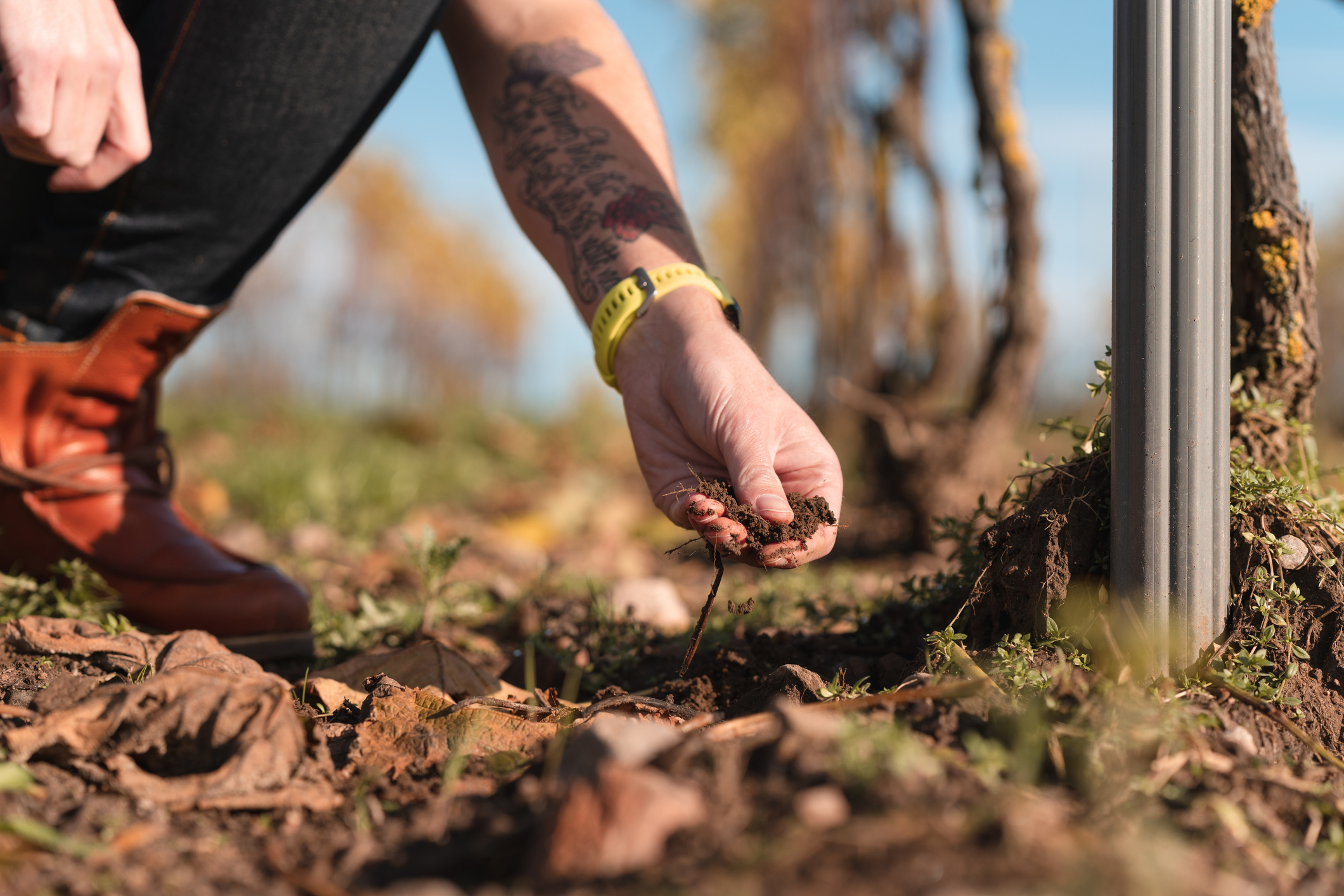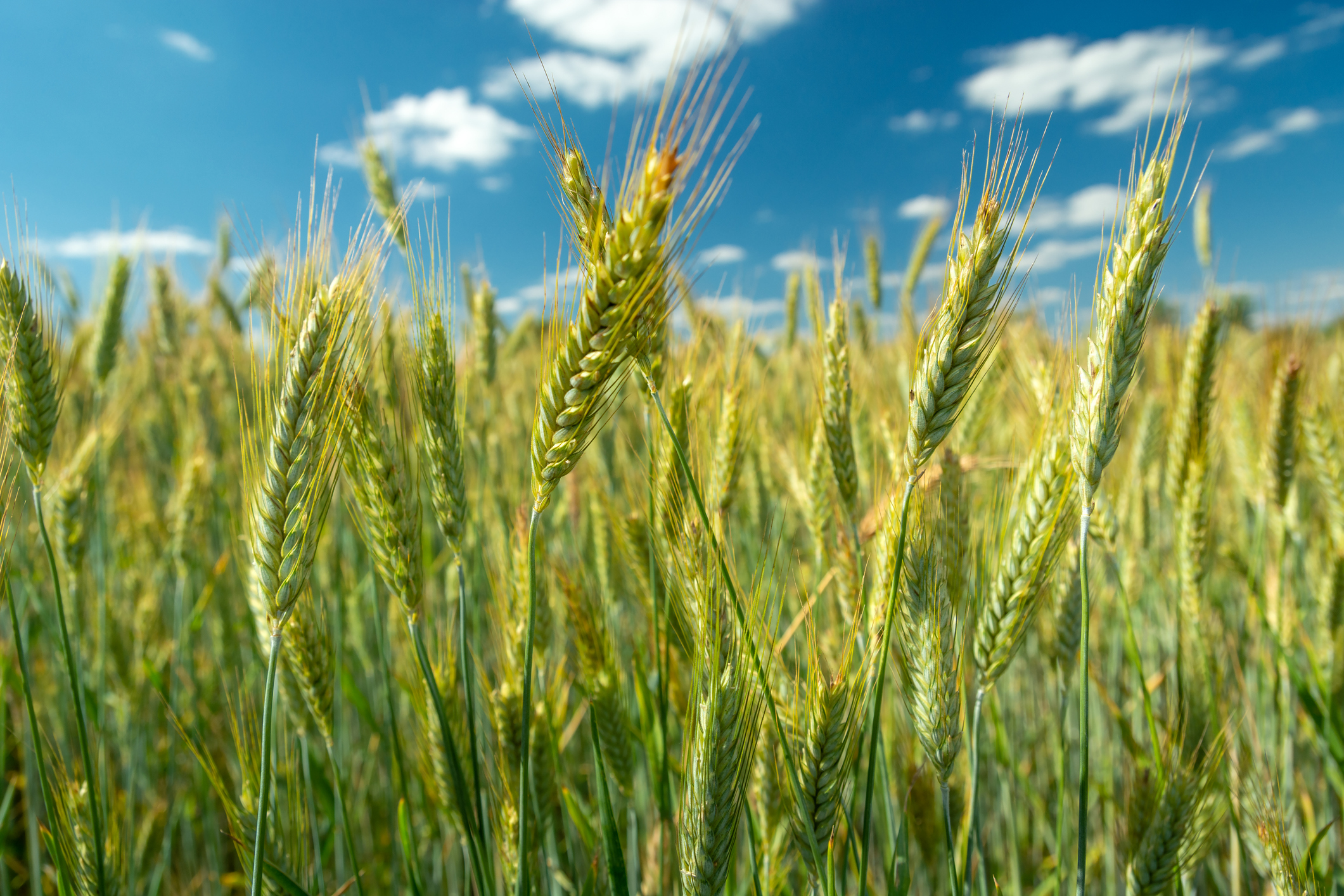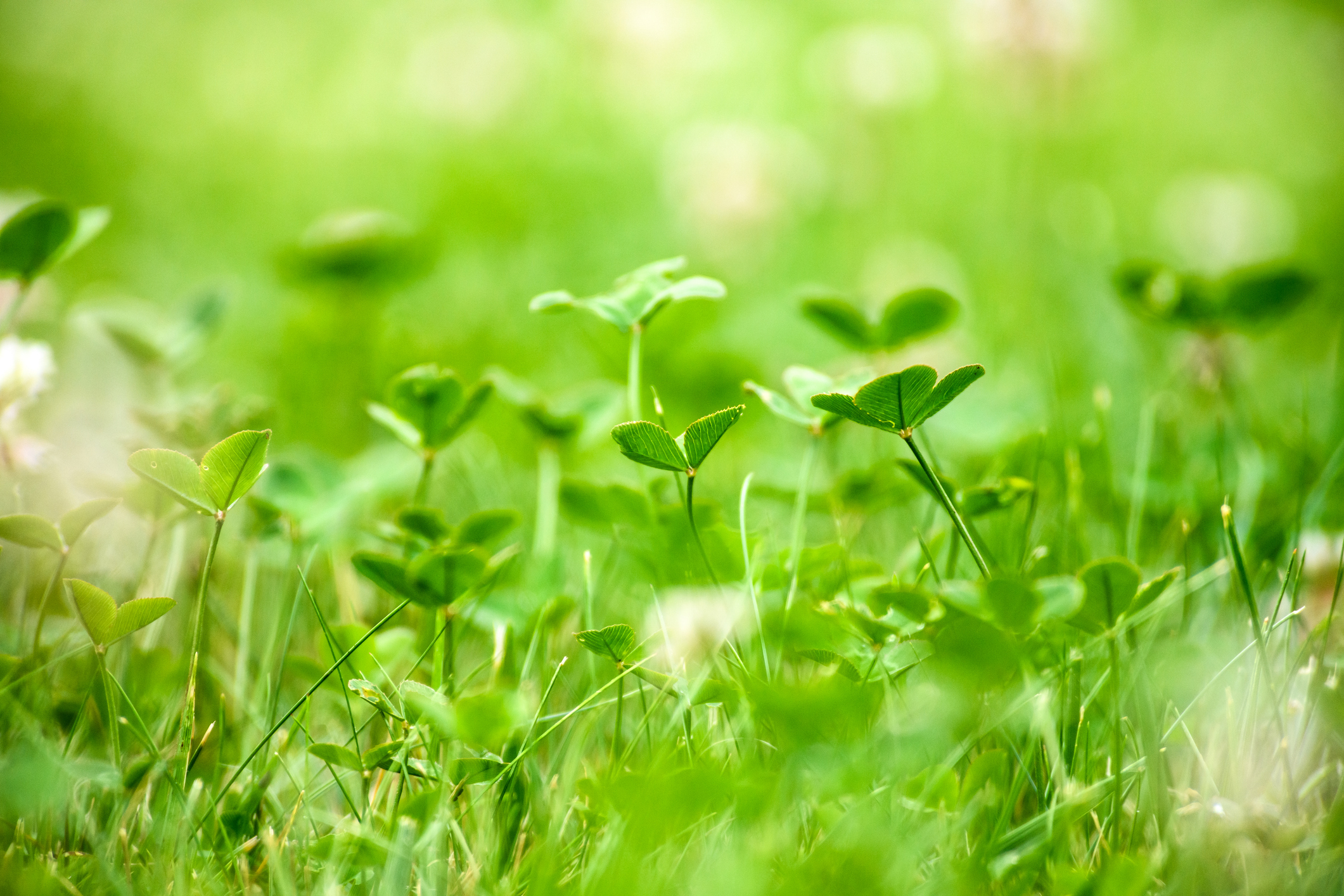Flower power: how growers use cover crops to make better wine
By Kathleen WillcoxKathleen Willcox discovers how grasses, flowers and legumes are improving resilience and quality in vineyards around the world.

Even casual home cooks wouldn’t substitute cilantro for rosemary in a roast, or sprinkle sage into a sauce that calls for basil. Through hard-won experience, we all know that ill-thought out swaps radically change results, and they rarely result in an upgrade.
Our understanding of the way cover crops change the quality of crops like grapes in the field is decidedly less evolved and nuanced, but we’re learning more every day.
Advocates say that cover crops help feed soil life, improve soil structure by stabilizing it, reduce soil compaction and help soils absorb heavy rains more efficiently, which in turn helps reduce erosion and nutrient runoff. A small increase goes a long way: a 1% increase in organic soil matter can help it absorb 20,000+ additional gallons of water per acre, a super power in an era of extreme weather conditions.
In addition, they help soils retain water more effectively, which can be a boon in drought conditions. Cover crops can also attract beneficial insects that in turn help eliminate pests and diseases, without the need for chemical intervention.
Winemakers who have relied on cover crops for decades say that their understanding of their diverse benefits has deepened over time.
“Organics and cover crops have been part of our program since the vineyard was established in the 1990s,” says Jacopo Dalli Cani, head winemaker at McHenry Hohnen in Margaret River. “The idea was to avoid the use of herbicides and pesticides and to manage competing weeds and increasing soil carbon.”
Beyond the benefits for soils and crops, the planting of cover crops help remove carbon from the atmosphere and provides snacks and shelter for insects, birds and other wildlife.
While there are still many farmers who doubt the efficacy of cover crops, a recent meta study conducted at the Indiana University School of Science compiling data from more than 100 field trials around the world found that cover crops increase yield by 2.6%. Cover crop adoption is certainly on the rise. Between 2017 and 2022, the total number of acres of cover crops planted in the U.S. increased 17% from 15.4 million to 18 million, according to the USDA.
Many of the cover crops that vintners plant double as eye-candy, and do what you’d expect them to (like attract pretty flying things).
“I chose a mix of dwarf, autumn beauty and black sunflowers, phacelia, sweet clover, blue flax and vetch,” Ryan Decker, viticulture and grower relations manager at Clos du Val in the Napa Valley, says of their pollinator-friendly insectary crops planted every tenth row. “It should look pretty cool too!”
But other cover crop choices, while less visually stunning, allow growers to create healthier soils without the help of chemical fertilizers, herbicides or machines, boosting vine health – and ultimately, the quality of wine in the glass.
While there is still a lot to learn about which cover crops are ideal for site-specific terroirs, winemakers are deploying a mixture of flowers, legumes and brassicas in their vineyards, much as experienced chefs utilize specific spices in recipes.
Grains and brassicas for soil structure
Growers are finding that cover crops can radically change the quality of their soils.
“For our heavier clay soils I like to use triticale,” says Decker. Triticale is a hybrid of wheat and rye, and it “produces a huge root system that helps remove some of the excess moisture and breaks up the clay. It also produces a lot of above-ground biomass that can either act as a green mulch – incorporated as ‘green manure’ – or you can wait for it to dry out before incorporating to help use up excess soil nitrogen.”

For Clos du Val’s loamier and more fertile soils, Decker uses a blend of Blando Brome (a self-seeding annual grass), Zorro Fescue (an early-maturing annual grass), perennial ryegrass (fast-growing pest-resistant grass) and white clover (a pasture legume).
“The brome and fescue are great reseeding annuals that come up strong in the first year while the ryegrass takes a few years to really establish,” Decker says.
The clover is a beauty queen (in bloom it appears in many Instagram feeds), but it also adds nitrogen and provides fodder for beneficial insects.
Cani, meanwhile, uses a blend of legumes (primarily field peas), oats, rye and brassicas (primarily radishes) to improve soil carbon content and improve its structure in McHenry Hohnen’s rocky, ironstone soils.
“The dirt under your feet is bouncy when walking mid-row, which is always an indication of low compaction and good structure,” he notes. “Our Chardonnay wouldn’t taste nearly as well coming from more compacted soil.”
Bell beans and fetch to improve vigor
Young vineyards need to babied, and often require a decade of dedicated work before they turn a profit. They won’t even be ready for harvest for a minimum of three years. During that revving up period, winemaker Laura Barrett says she and the team at Clif Family Winery & Farm in St. Helena utilize particular cover crops to pump the soil up.
At Valle di Sotto, Clif Family’s newest estate vineyard in the Oak Knoll District which was planted in 2018, the team is moving from annual seeding and cultivation to permanent cover cropping.
“When the vines are younger, we want to improve vine vigor, so we plant a blend of bell beans and fetch, which are nitrogen fixing,” Barrett says. “This is then cultivated in the spring to leave all the water and nutrients for the vines to use.”
Partner Content
Once Clif establishes full grape production and healthy vine vigor, the team pivots to Vintners Blend, which is generally a mix of legumes like peas, beans, grasses and brassicas like radishes and greens. The blend regenerates for five to seven years, and regularly provides food for the sheep they release into vineyards in spring.
This symbiotic sheep-cover crop relationship allows Clif to significantly reduce their reliance on tilling and machine mowing, which slashes their carbon footprint, ensures carbon retention, improves the soil microbiome, maintains soil moisture and provides free and natural compost via sheep manure.
Legumes to improve wine quality and fermentation strength
After a decade of experimentation, Noah Rowles feels like he finally has his cover crop recipe down pat.
The owner, farmer and winemaker at Dovecote Estate Winery in Alisos Canyon, CA, has a 250-acre estate, 44 of which are devoted to wine grapes, with the rest carved out for rotating vegetable crops, native grazing land and wildlife.
Rowles has planted a blend of legumes like peas, clovers and medics. The primary goal of this blended cover crop is to bring nitrogen back to the soil after it’s depleted post-harvest. This in turn helps establish a healthy population of fungi and bacteria in the soil that help the vines absorb nutrients when the growing cycle begins again in the spring. The secondary purpose, Rowles says, is to protect against winter erosion, slow runoff from rains, and allow for deeper penetration of fresh and focused groundwater.

The cover crops also control pests by rebalancing and “encouraging a vibrant, native, diverse and natural set of local critters to live within the vines, whether they be bacterial, fungal, insect, reptile, amphibian, mammal or otherwise,” Rowles says.
With this blend, “every soil type benefits. If there were one varietal that perhaps seems to need it more, I would say the darker, thicker-skinned varietals like Petite Sirah seem to benefit from the cycle ever so slightly more, but this is just personal observation.”
In addition to Petite Sirah, Dovecote grows Syrah, Grenache, Mourvedre and Viognier.
But the proof is in the glass.
“We have absolutely noticed improvements to the vine health and wine quality, in terms of greater phenolic balance and complexity, and improved ageability potential of wines,” Rowles says. “And the vigor and health of the native yeasts themselves that come from the winery allow us to start and finish our all-native yeast fermentations with strength and momentum, with far less stress and sluggishness versus years prior.”
Planting cover seasonally
At Ehlers Estate in St. Helena , Adam Casto says their approach to cover crops has evolved considerably, and encompasses a range of plantings selected for different purposes and seasons.
“To say our understanding of the soil as a living organism has evolved fairly dramatically in the past decade or so would be a severe understatement,” Casto says. “Cover crops are an exciting and dense area of study and practice. It is not a single-stop solution to any one problem, but forms an important part of responsible and productive agriculture across the world.”
Casto argues that cover crops, and their interaction with crops through the soil may even help us deepen our understanding of the essential role soil has in virtually all life on earth.
“We use a range of legumes, grasses and flowering species to meet the needs of the various vineyard sites on a per-case basis, as well as an overall approach to the surrounding environment,” Casto says, adding they are especially essential in organic vineyards, where they can promote beneficial insects to provide biological pest control. “We broadly think of them as winter and summer cover crops.”
…but they won’t solve all viticultural problems
Cover crops, sadly, are not a panacea.
At Yangarra Estate Vineyard in South Australia, winemaker Pete Fraser explains that drought conditions disrupted their planting of cover crops (which was done, at least in part, to mitigate the drought conditions).
“We seeded our vineyard this year, but it didn’t take,” Fraser says. “It’s always challenging in our sandy soils, but with the drought, it made it even more challenging.”
The vineyard team seeded deep-rooted fava beans in a bid to infuse the vineyard with nutrients. They also favor native grasses which are adapted to thrive in the challenging climate. They’ll try cover crops again next year, Fraser says, but admits that it can be a more challenging lift than it first appears.
“Our soils in Australia are ancient, which means they’re fragile and depleted,” Fraser says. “That means that cover crops can do them a lot of good, but they can also be challenging and laborious to plant.”
And because Yangarra is certified organic, they also have to receive pre-approval from Australia’s certifying body, and the seeds that are sure to win a rubber stamp are often more costly.
As winemaking becomes ever-more challenging amid climate change and a challenging economic environment, every spot of edge you can get in environmental protection and quality helps. Sometimes, that requires a thoughtful sprinkling of radishes and peas.
Related news
South Australia wine exports to China reach post-tariff high




